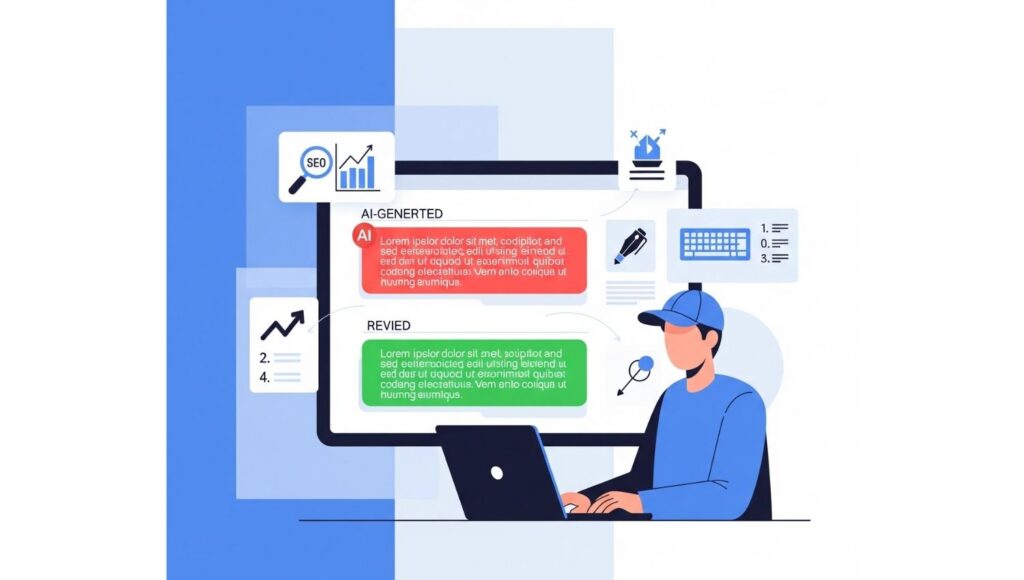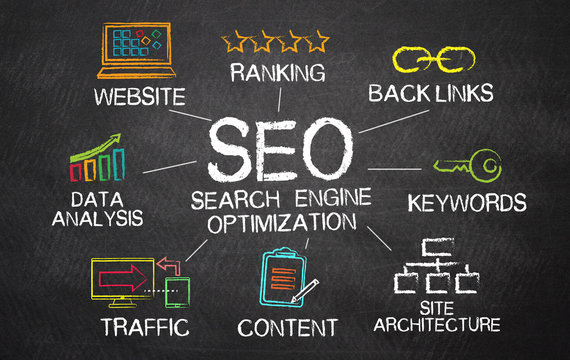How to Remove Content AI to Optimize the Post
Table of Contents

Artificial Intelligence (AI) is revolutionizing the way we develop and maintain content. Most marketers, bloggers, and companies are leveraging AI-generated content tools to expedite their process. Although AI can be a great helper, there are times that the AI-generated content automatically is not precisely what you need for your post—due to SEO, tone of the brand, uniqueness, or regulatory purposes.
In those instances, it’s necessary to know how to delete AI-generated content and substitute it with genuine, optimized material to enhance your post’s performance and credibility.
In this in-depth guide, we’ll examine:
- Why you would be required to delete AI-generated content
- How AI content impacts SEO and reader trust
- The step-by-step procedure for identifying and replacing AI text
- Tools and methods to optimize your post post-removal
- Long-term content best practices
Content AI
Content AI is AI-based software such as Jasper, Writesonic, Copy.ai, or in-built AI capabilities in SEO plugins (like Rank Math’s Content AI or Yoast’s AI content suggestions). The software creates blog articles, product descriptions, headings, and even SEO suggestions from prompts and keywords.
Although these tools are time-saving, they have the tendency to:
- Generate generic or repetitive content
- Contain factual errors
- Miss your distinctive brand voice
- Do not satisfy your audience’s unique requirements
- Risk being flagged by Google for over-optimization or being too formulaic
Why Take Down AI-Generated Content?
Following are the most prevalent reasons why website owners take down AI-generated content:
1. SEO Risks
Google’s Helpful Content Update favors people-first content. If your AI-generated content is thin, generic, or duplicative, it might damage your rankings.
2. Brand Authenticity
Your brand voice is unique. AI can approximate it but may lack the nuance, humor, or personality your readers love.
3. Factual Accuracy
AI sometimes produces incorrect or outdated facts. This can hurt your credibility.
4. Compliance Issues
If you’re in finance, health, or law, regulations often require human verification of content accuracy.
5. Content Overlap
AI might generate phrases identical to other online sources, risking plagiarism or duplicate content penalties.
Step-by-Step Guide: How to Remove Content AI to Optimize Your Post
Step 1: Identify AI-Generated Sections
Use these methods:
- Content review: Look for generic statements, repetitive patterns, or vague phrasing.
- AI detection tools: Try Originality.AI, Copyleaks, or GPTZero to identify AI-like text.
- Fact-checking: Flag any statements that sound plausible but lack credible sources.
Step 2: Backup Your Original Post
Before editing:
- Save a copy of your article (Google Docs, Notion, Word).
- Export a backup from your content management system (WordPress, Shopify, Wix, etc.).
Step 3: Erase or Rewrite AI Text
Examine:
- Rewriting based on your own knowledge
- Sharing personal anecdotes or case studies
- Including data from credible sources
- Utilizing brand-specific terms
Example:
AI-written text:
“Conversion rate optimization can increase your sales.”
Human rewrite:
“Optimizing product pages for quicker load time and more readable CTAs increased our conversion rate by 23% in only 30 days.”
Step 4: Add Human-Generated Value
Replace removed content with:
- Primary research
- Quotes from experts
- Industry stats
- Genuine customer testimonials
- Personal experiences
Step 5: SEO Optimization
After humanizing your post:
- Keyword optimization – Organically insert targeted keywords in headings, body copy, and meta tags.
- Meta description – Write a unique, interesting summary for search results.
- Header structure – Employ H2, H3, and H4 tags for improved readability.
- Internal linking – Link to related posts for SEO enhancement.
- Image optimization – Include alt text in all images.
Step 6: Run a Final Quality Check
*
- Read aloud – Guarantees natural flow.
- Grammar check – Grammarly or ProWritingAid.
- Plagiarism check – Confirm originality before publishing.
Tools to Help You Remove and Optimize Content
| Tool | Purpose | Why It Helps |
|---|---|---|
| Originality.AI | Detect AI-generated text | Ensures human originality |
| Grammarly | Grammar and style check | Improves readability |
| Hemingway Editor | Simplify sentences | Boosts clarity |
| Clearscope / Surfer SEO | Content optimization | Aligns with SEO best practices |
| Google Search Console | Performance tracking | Measures impact of edits |
Common Mistakes When Deleting AI Content
- Overwriting everything – Some AI parts can be okay; just replace the bad areas.
- Forgetting keyword placement – Don’t lose SEO balance while rewriting.
- Neglecting formatting – Keep paragraphs concise, include bullet points, and utilize subheadings.
- Skipping fact-checking – Even when rewriting, check facts.
Benefits of Replacing AI with Optimized Human Content
- Better SEO rankings – Google prefers high-quality, original content.
- More engagement – Readers believe personal views over general information.
- More conversions – Original writing convinces better.
- Lower plagiarism risk – Prevents duplicate content penalties.
- Brand credibility – Human touch fosters loyalty.
Long-Term Best Practices for AI-Free, Optimized Content
- Leverage AI as a assistant, not an author – Have AI suggest or create outlines, but the substance yourself.
- Create brand voice guidelines – Get tone right on every post.
- Keep an editorial calendar – Don’t put out hasty, AI-reliant posts.
- Invest in quality research – Thickness and uniqueness triumph in SEO.
- Update content often – Refresh facts and examples often.
Workflow Example: From AI Draft to Human-Optimized Post
- Create a draft AI outline
- Compose human introductions and conclusions
- Substitute AI-created examples with real data
- Manually optimize for SEO
- Insert media, charts, and internal links
- Proofread and publish
Conclusion
AI writing tools are a double-edged sword: they can make you write faster but sometimes sacrifice authenticity, accuracy, and SEO worth you require. Cutting out AI-written sections and rewriting them with human-written, highly optimized content is the best way to make your posts rank higher, engage your audience, and represent your brand identity.
Done properly, you don’t just delete AI-written content—you turn your post into a conversion-driving, audience-delighting, search engine-friendly asset.
Frequently Asked Questions (FAQ)
1. Why do I need to delete AI-created content from my blog posts?
Deleting AI-created content makes your posts accurate, unique, and in your own brand voice. It also boosts SEO and prevents Google penalty for low-quality or copied content.
2. Does Google punish AI-written content?
Google doesn’t penalize text written by AI as such, but it favors helpful, people-first content. Thin, repetitive, or false content generated by AI can hurt your ranks.
3. How do I know if content is AI-generated?
You can scan your text using AI detection tools like Originality.AI, Copyleaks, or GPTZero. Check for very generic phrasing, repetition in sentence structures, or general statements.
4. Can I rephrase AI-written content rather than deleting it?
Yes. You can rephrase AI-written content with personal thoughts, confirmed facts, and brand-related tone. This is usually quicker than a complete rewrite.
5. What tools assist in optimizing content after editing out AI parts?
Tools such as Grammarly, Hemingway Editor, Surfer SEO, and Clearscope assist in enhancing readability, SEO, and keyword placement after edits.
6. Can I use AI for outlines or research?
Yes. AI is a fantastic brainstorming, outlining, and idea-generation assistant—provided that the final content is human-checked and optimized.
7. How frequently should I review my site for AI-dominant content?
A quarterly content review is advisable. This ensures you catch underperforming posts and enhance them with new, original content.


